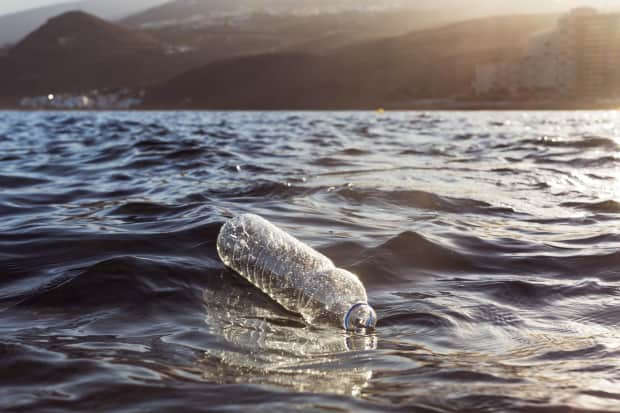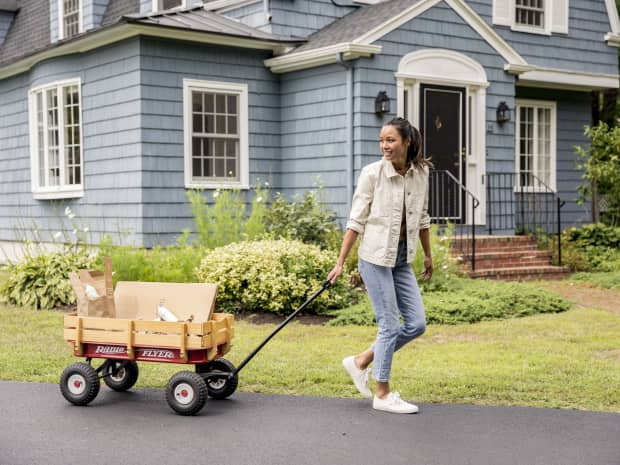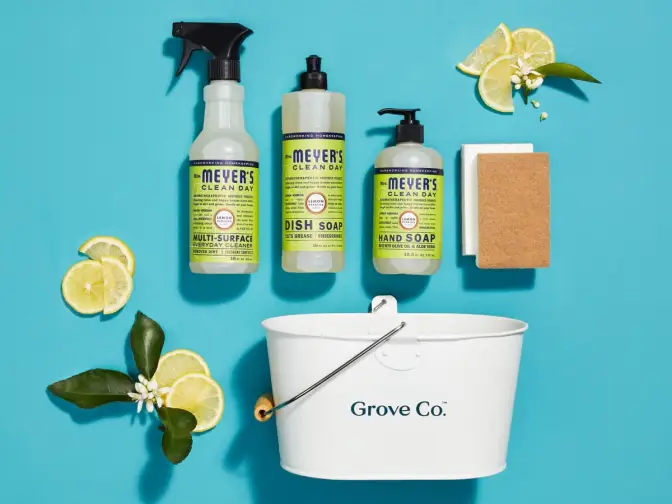
14 Reusable & Eco-Friendly Versions of Common Household Products
Single-use products are convenient for us but awful for the planet because they can only be used one time. Try reusable options instead.
Read More


Last Updated: July 27, 2022
More than 14 million tons of plastic waste end up in the ocean every year. Here’s how it ends up there, why it’s bad — and how you can help keep it clean.
Everybody knows that plastic is bad for the ocean. But few of us are in the practice of walking up to the Pacific and tossing empty jugs of laundry detergent or orange juice into its depths. So, how does that litter even get there?
Grove sustainability experts answer this and other questions about plastic and the ocean ... plus they’ve given us 10 ways we can stop contributing to this evolving ecological disaster. If you're really on a plastic-ditching kick, check out more ways to rid your home of harmful plastics.
of plastic packaging are created by U.S. companies every single day.
of plastic gets recycled, no matter how much you put in your recycling bin.
of plastic enter the oceans every year, killing over 1 million marine animals.
You’ve heard of the Atlantic, Pacific, Indian, and Arctic Oceans, but what about the Plastic Ocean? Let’s begin with a bluntly alarming fact: By 2050, the oceans will contain more plastic than fish, by weight.
It sounds bleak, and it is bleak. At least 14 million tons of plastic waste enter the ocean every year. And because plastic doesn’t decompose, that waste just… stays there … creating things like the Great Pacific Garbage Patch, a plastic island in the ocean that keeps getting bigger. Frequently, it gets broken up by the currents into wee “microplastics.”
For a disturbing look at what microplastics can do to the seabirds who eat it and unsuspectingly feed it to their young, watch this video posted by the United Nations:

No one is suggesting that the average person is malevolently upending their garbage bins into the nearest waterway. However, urban and stormwater runoff, as well as sewer overflow, can transport land-based litter to the great big blue.
Countries like the United States and Japan export much of their plastic waste to other countries like Malaysia, Vietnam, and until recently, China. Though it’s not clear precisely how much of this garbage ends up in the ocean, there are immense discrepancies between the amount of waste the importing countries can responsibly accommodate, and the amount that they receive. The countries least equipped to manage waste and recycling are largely the ones taking it in.
But, wait! You do your due diligence like any decent global citizen and pop your plastics into the recycling bin. Your recycling can’t be part of the plastic that ends up in the ocean, right? Wrong.
Recycling plastic is complicated, to say the least. Not all plastic even is recyclable — remember the recent push to discontinue the use of plastic straws? Coffee cups are only recyclable by a particular machine because the plastic coating on the inside that keeps your latte nice and warm needs to be separated from the paper on the outside.
And while some single-material items — that jar of peanut butter on which so many sack lunches depend, for example — are recyclable, they can’t have any food residue on or in them.
Each time you toss out an empty bottle of sriracha without rinsing it thoroughly, chances are that it ends up in a poorly-managed landfill and, ultimately, dumped into the ocean where it is broken into tiny pieces by the current and eaten by an innocent manatee.
We’ve painted a picture already of the crimes against marine animals from the plastic pollution in the ocean. It doesn’t end, however, with albatrosses and sea turtles.
Plastic makes the ocean sick in a variety of ways, affecting more than just aquatic life.
Microplastics are increasingly being found in tap water, sea salt, and beer — and sometimes, even the fish that we eat.
Several of the chemicals used in the production of plastic are carcinogenic. They can interfere with the body’s endocrine system, disrupting immunity, neurology, development, and reproductive health.
Not to mention that when plastic hitches an indefinite ride in the ocean, it has a tendency to accumulate toxic contaminants. Those nasties are eaten by fish and other ocean life low in the food chain and slowly work their way into the larger food web, eventually finding their way onto your own dinner plate and, alas, into your body.
When plastic invades otherwise popular tourist destinations, it ruins the appeal to say the least.
Predictably, those local economies suffer from a loss of tourist dollars — and, when countries combat the build-up of garbage on their shores, they must pump a great deal of money into that neverending maintenance.
The fishing industry is also at war with plastic waste. Just imagine the cost of replacing or repairing the equipment that enables your livelihood every time a fishing net is befouled by garbage.
We get it: This information overload can make plastic waste seem like an unbeatable foe. If you want to do your part, though, here are 10 tips to get you started:
And learn how to avoid takeout plastic containers in general here.
Take the trouble to collect your garbage and dispose of it properly in a trash can, compost bin, or recycling bin.
You can also find brands that use recycling companies like Terracycle to help reduce waste from their products.
Do your research so you can use your purchasing power to snub greenwashing companies that have irresponsible or misleading environmental practices.
Easy swaps include a glass soap dispenser and its aluminum-packaged refills.
Commit to reusable bags that can be washed instead.
Better yet, make your own sauces and nut butters at home!
To read more about Grove’s commitment to battling plastic waste, check out our Beyond Plastic pledge. Our goal is to be utterly plastic-free by 2025.
In the meantime, we are the first plastic-neutral retailer in the world and have founded the Plastic Working Group to share best practices and innovations throughout the industry.

Single-use products are convenient for us but awful for the planet because they can only be used one time. Try reusable options instead.

Confused about biodegradable vs. compostable items? Read on to learn what the terms "biodegradable" and "compostable" actually mean from the experts at Grove.

Recycling makes us all feel virtuous and holy, but you might be unknowingly poking holes in the process by "wish" recycling non-recyclable items.

We've pulled 11 bamboo products that are not only great for the environment but are also highly rated by our members. Have a look!

Wondering who Grove is, what types of products we offer, and how to get a free gift set when you sign up? Learn more about flexible monthly shipments, customizing your shipment, and joining millions of happy households — no monthly fees or commitments required.